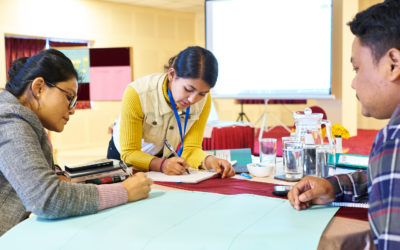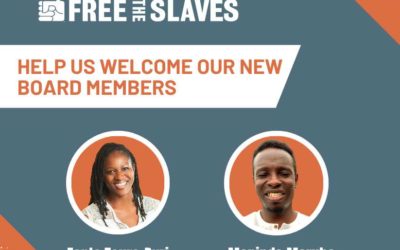Recently, Free the Slaves Partnerships Director Ginny Bauman, accompanied by FTS South Asia Director, Supriya Awasthi visited the work of our partner organization, Women Skill Creation Center (WOSCC) in Makwanpur District, Nepal. Here is her report:
Supriya and I arrived unannounced in Gairigaun village, picking the location at random from among the 40 sites where our local partner has set up new anti-slavery Community Vigilance Committees (CVC) in the past year. As in the other places we visited, WOSCC and the CVC are in a step by step process of stopping and then reversing the flow of children into domestic slavery. The committee’s volunteers collected detailed information throughout the community, through door to door visits, about who is going to school and which children are missing. These visits to all the homes in the community help the committee understand the struggles faced by many of the households and why children were sent to work elsewhere. It is a very visible and systematic outreach against child slavery, and in small communities like Girigauns, it marks a big turning point. It is not too hard for people to come from the outside to spread awareness against trafficking—to hold a few meetings or perform street theater—but this work is much more persistent, and much more owned by members of the community.
Up to now, for poor families, there has been nothing remarkable about sending off their 7 – 15 year old children to live and work in someone else’s house. It has been a way to make the food stretch to feed everyone. These families couldn’t afford the school costs anyway. But WOSCC and the local CVC members know the real situation facing most of these children: As one of the young leaders of this group (herself a former child slave) told us: domestic slavery means eating leftovers or going hungry; no pay; and the promises of school never becoming real. That was as much as she wanted to tell. It was clear that there was so much else about her time in domestic slavery that was quite beyond sharing with strangers.

This drawing illustrates how an entire community in Nepal can become engaged in eradicating slavery.
In this place, the CVC found there were 8 children in slavery. It took several months to convince the parents that their children were in danger and facing abuse. But once the process began and the CVC found where the children were and helped them return, the effort gained momentum. WOSCC made sure the local government paid the school expenses for some of the children, and WOSCC itself funded the others to go to school. With their children home, the parents turned into anti-slavery advocates, becoming active members of the CVC, and supporting each other, while also making sure that no more children are allowed to slip into slavery.
In site after site, WOSCC is triggering similar processes, coordinating over a thousand new CVC activists in the past year alone. They are finding the facts, counseling each household, locating the children, using legal threats against slaveholders to get them released, bringing them home and then making sure they have the best chance to thrive. It is especially important to integrate parents, former slaves and other community members together in a tight-knit group to sustain the effort.Each group is trained to advocate persistently with local authorities about school scholarships, skills training and income generation.
In the process, in Girigauns, the group also stopped excessive alcohol abuse and curtailed domestic violence. They got a successful prosecution in a rape case, and they also try to counsel each person migrating for work, to help them think through the risks and protect themselves. In one case where a person was in trouble in Malaysia, they successfully pressured the trafficker to bring him back. Many more opportunities are needed in this place, families are still struggling, and the children who were in slavery seem to hold inside a lot of hidden pain, but here the people have drawn a line: their children will not be slaves.


